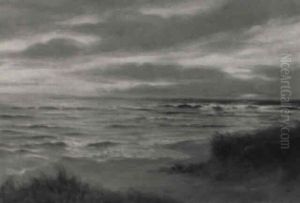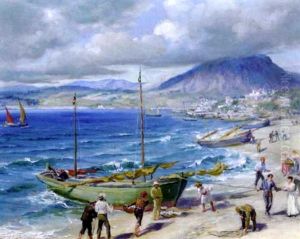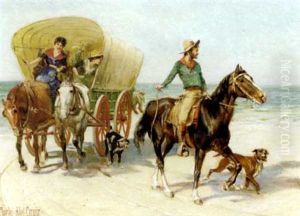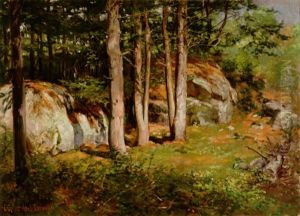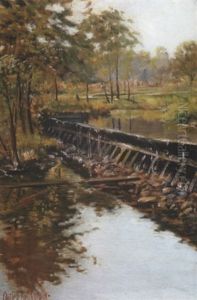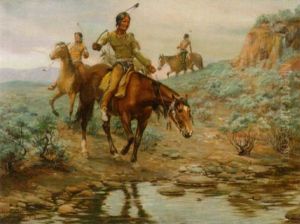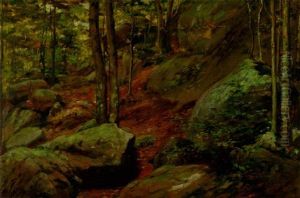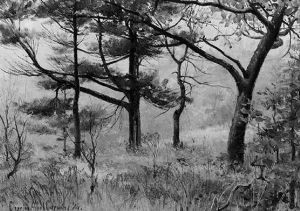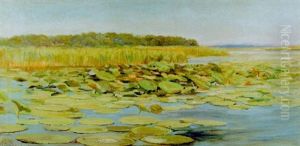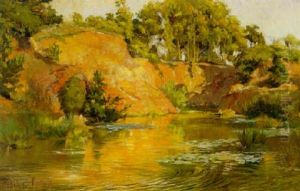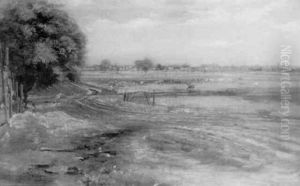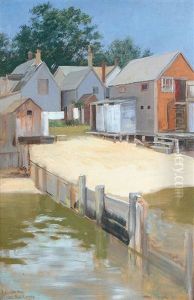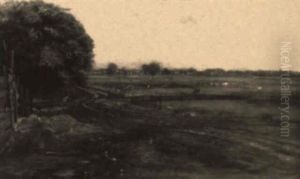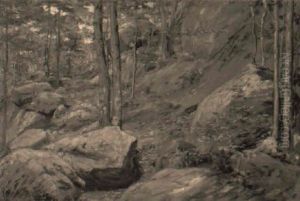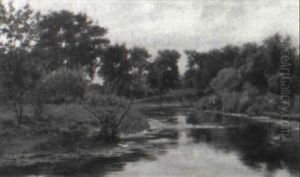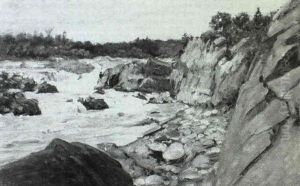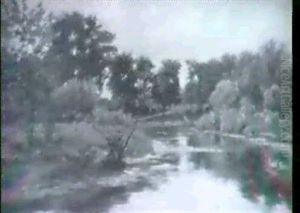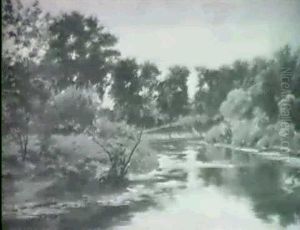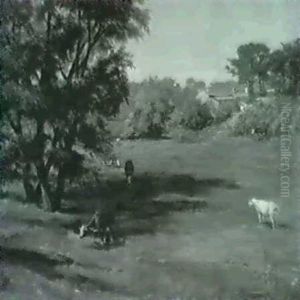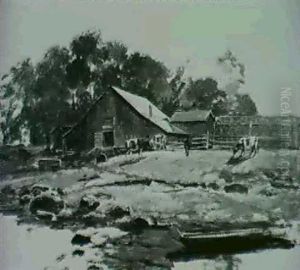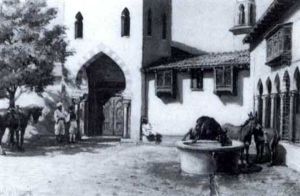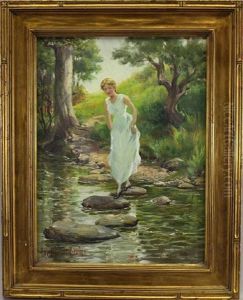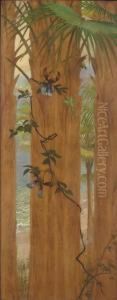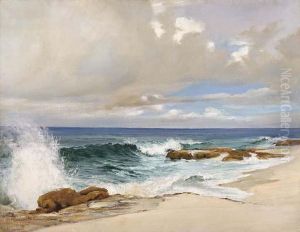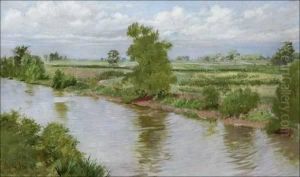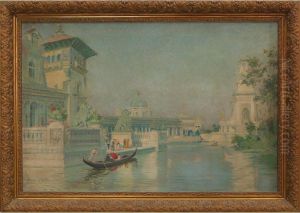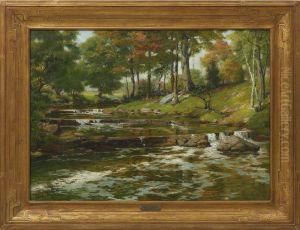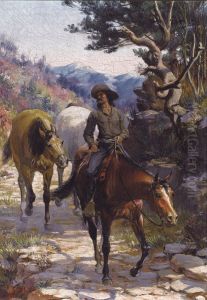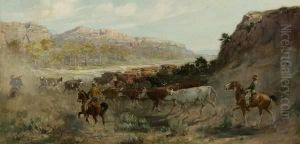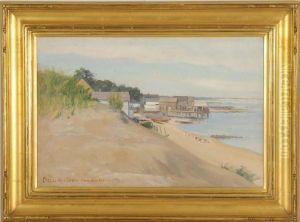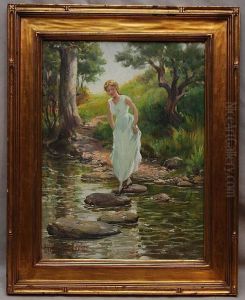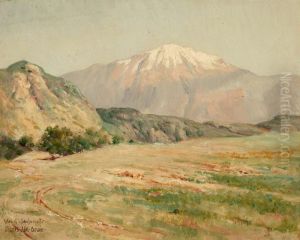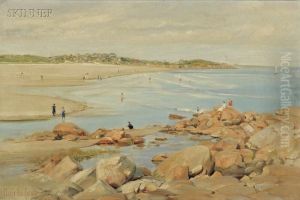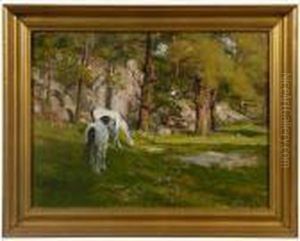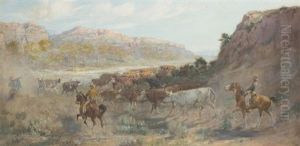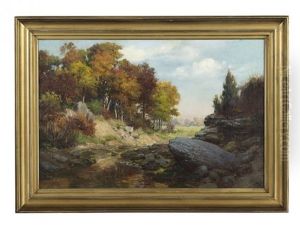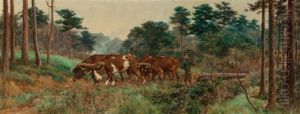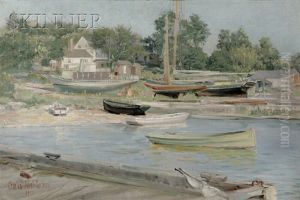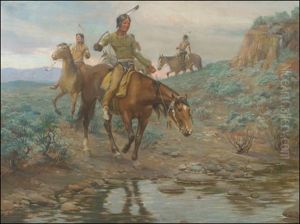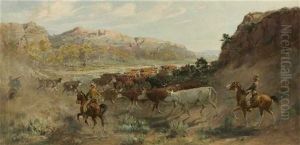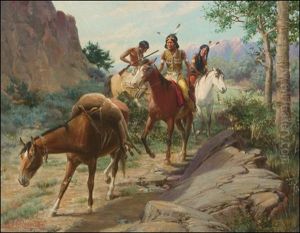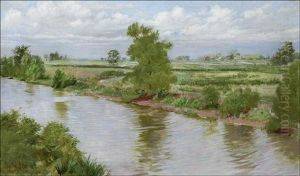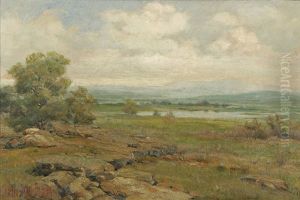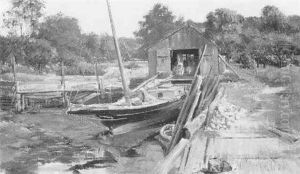Charles Abel Corwin Paintings
Charles Abel Corwin was an American painter and lithographer known for his detailed and realistic landscapes and seascapes. Born on August 4, 1857, in New Providence, New Jersey, Corwin showed an early interest in art. His talent was evident from a young age, and he pursued his passion for painting throughout his life. Corwin studied at the National Academy of Design in New York, where he honed his skills and was influenced by the landscapes of the Hudson River School.
Corwin's work is characterized by its meticulous attention to detail and vibrant use of color, capturing the beauty and majesty of the American landscape. He traveled extensively across the United States, from the rugged coasts of Maine to the majestic mountains of the West, drawing inspiration from the diverse landscapes he encountered. His paintings often reflect a sense of tranquility and awe towards nature, a hallmark of his artistic style.
In addition to landscapes, Corwin was also known for his seascapes and depictions of marine life. His lithographs, particularly those of marine subjects, were well regarded for their precision and depth. Corwin's ability to capture the essence of his subjects made his work popular among art collectors and the public alike.
Throughout his career, Corwin exhibited his work at various art institutions, including the National Academy of Design and the American Watercolor Society. Despite his success, Corwin remained relatively modest about his accomplishments, preferring to let his work speak for itself.
Charles Abel Corwin passed away on March 29, 1938, leaving behind a legacy of artwork that continues to be admired for its beauty and realism. His contributions to American art are remembered for their portrayal of the country's landscapes and seascapes with a profound sense of respect and admiration for the natural world.
